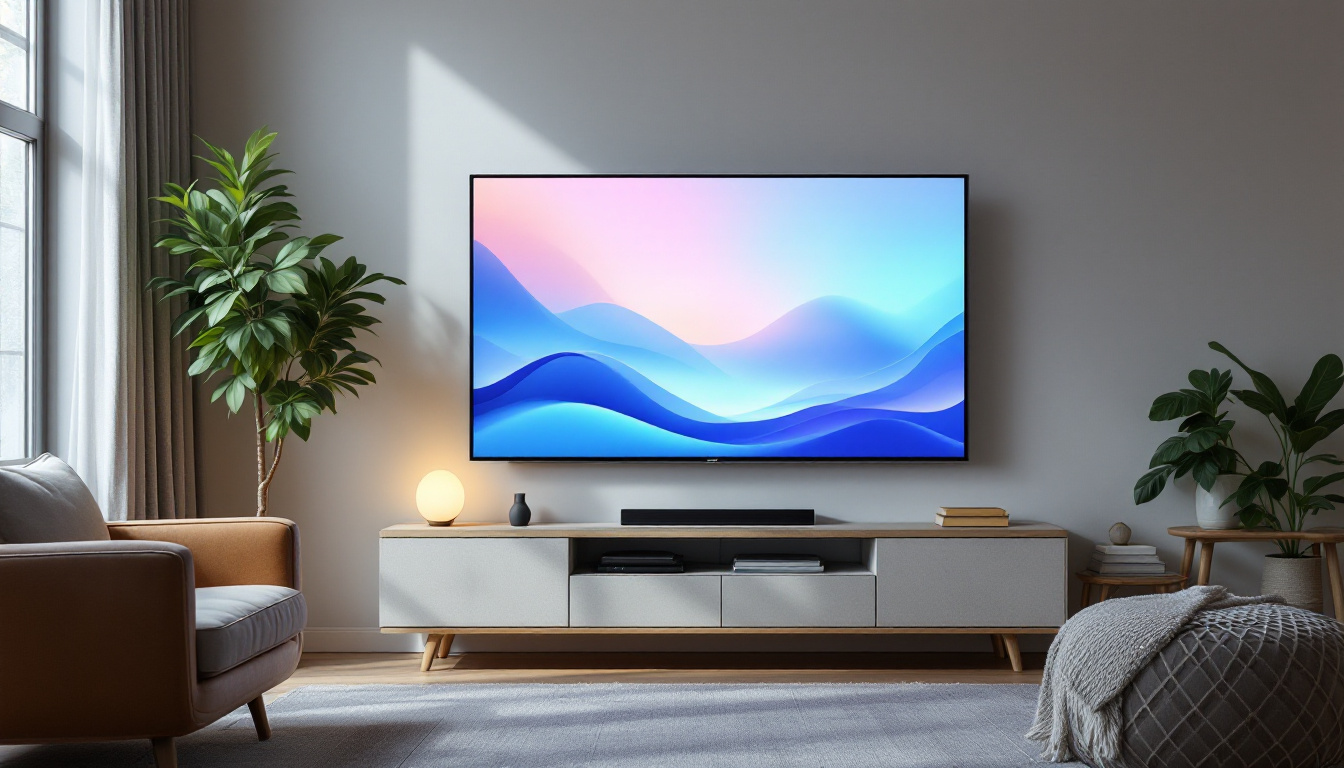In the realm of modern technology, display screens have become an integral part of our daily lives. Among the most common types are LCD (Liquid Crystal Display) and LED (Light Emitting Diode) displays. While often used interchangeably, these two technologies have distinct characteristics and applications. This article aims to clarify the differences and similarities between LCD and LED displays, exploring their functionalities, advantages, and limitations.
Understanding LCD Technology
LCD technology has transformed the way images are displayed on screens. Utilizing liquid crystals, this technology manipulates light to create vibrant visuals. It is essential to grasp the fundamental workings of LCDs to appreciate their role in contemporary displays.
How LCD Works
At its core, an LCD screen consists of two polarized panels with a liquid crystal solution sandwiched between them. When an electric current passes through the liquid crystals, they align in a way that either blocks or allows light to pass through. This process creates the images we see on the screen.
Backlighting is crucial for LCDs, as they do not emit light on their own. Traditional LCDs often use fluorescent lamps for backlighting, which can lead to less efficient energy use and lower brightness compared to newer technologies. However, advancements have led to the development of LED backlighting, which not only enhances brightness and color accuracy but also extends the lifespan of the display. This shift has made LCDs more competitive with other display technologies, such as OLED, which are known for their deep blacks and vibrant colors.
Advantages of LCD Displays
LCD displays offer several advantages that have contributed to their widespread adoption. First and foremost, they are energy-efficient, consuming less power than older display technologies. This efficiency is particularly beneficial for portable devices like laptops and smartphones.
Additionally, LCD screens are lightweight and slim, making them ideal for a variety of applications, from televisions to handheld devices. Their ability to produce sharp images with good color reproduction further enhances their appeal. Furthermore, LCD technology has evolved to include features like touch sensitivity, allowing for interactive displays that enhance user experience in applications ranging from smartphones to kiosks. This interactivity has opened up new avenues for user engagement and has become a standard expectation in modern devices.
Limitations of LCD Displays
Despite their advantages, LCD displays are not without limitations. One significant drawback is their viewing angles. Colors and brightness can shift when viewed from different angles, which can be problematic in multi-user settings.
Moreover, LCDs may struggle with fast-moving images, leading to motion blur. This limitation makes them less suitable for high-speed gaming or action-packed movies compared to other technologies. To combat this issue, manufacturers have introduced various techniques such as faster refresh rates and advanced response times, which help to minimize motion blur and improve the overall viewing experience. Nevertheless, for enthusiasts seeking the ultimate in visual performance, alternatives like OLED displays, which offer superior contrast and faster response times, are often preferred despite their higher price points.
Exploring LED Technology
LED displays have gained popularity in recent years, often touted for their superior brightness and color accuracy. Understanding how LED technology differs from LCD is essential for making informed decisions about display options. As technology continues to evolve, the applications of LED displays are expanding, leading to innovative uses in various fields, from entertainment to advertising.
How LED Works
LED displays utilize light-emitting diodes as their primary light source. Unlike traditional LCDs that rely on fluorescent backlighting, LED displays can be either edge-lit or full-array. Edge-lit displays have LEDs positioned along the edges of the screen, while full-array displays have a grid of LEDs behind the screen, allowing for more uniform lighting. This configuration not only improves brightness but also enhances energy efficiency, making LED displays a more sustainable option in the long run.
This technology enables LED displays to achieve higher brightness levels and better contrast ratios, resulting in more vivid images. Additionally, some LED displays support HDR (High Dynamic Range), enhancing the viewing experience by providing a broader range of colors and brightness levels. This capability is particularly valuable in dynamic content, where the depth of color and detail can significantly impact viewer engagement, making LED technology a favorite in the film and gaming industries.
Advantages of LED Displays
One of the most notable advantages of LED displays is their exceptional brightness. This feature makes them ideal for environments with high ambient light, such as offices or outdoor settings. Furthermore, LED technology allows for thinner and lighter screens, enhancing portability and design flexibility. This has led to the proliferation of LED displays in public spaces, such as airports and shopping malls, where large, eye-catching screens can attract attention and convey information effectively.
Color accuracy is another strong point for LED displays. They can produce a wider color gamut, ensuring that images appear more lifelike and vibrant. This characteristic is particularly beneficial for photographers, graphic designers, and anyone who values color precision. Moreover, advancements in LED technology have led to the development of specialized displays, such as OLED (Organic LED), which further enhance color reproduction and viewing angles, making them a preferred choice for high-end applications.
Limitations of LED Displays
Despite their many advantages, LED displays also come with certain drawbacks. One of the primary concerns is the cost. LED technology tends to be more expensive than traditional LCDs, which can be a barrier for budget-conscious consumers. However, as manufacturing processes improve and competition increases, prices are gradually becoming more accessible, allowing a wider audience to enjoy the benefits of LED technology.
Additionally, while LED displays generally provide better performance than LCDs, they can suffer from issues such as blooming, where bright areas bleed into darker regions, affecting image clarity. This phenomenon can be particularly noticeable in high-contrast scenes. Furthermore, some users may experience issues with viewing angles, as certain LED configurations can lead to color distortion when viewed from the side. As manufacturers continue to innovate, addressing these limitations remains a key focus in the development of next-generation displays.
Comparing LCD and LED Displays
When choosing between LCD and LED displays, it is essential to consider various factors, including performance, cost, and intended use. Both technologies have their strengths and weaknesses, making them suitable for different applications.
Performance and Image Quality
In terms of performance, LED displays often outperform LCDs, particularly regarding brightness and color accuracy. The ability to produce deeper blacks and more vibrant colors gives LED displays an edge, especially in dark environments.
However, high-quality LCDs can still deliver impressive image quality, especially with advancements in technology such as IPS (In-Plane Switching) panels, which improve color reproduction and viewing angles. For general use, an LCD may suffice, while specialized applications may benefit from the superior capabilities of LED displays.
Cost Considerations
Cost is a significant factor when deciding between LCD and LED displays. Generally, LCDs are more budget-friendly, making them a popular choice for consumers looking for a reliable display without breaking the bank.
On the other hand, LED displays, while more expensive, offer long-term savings through energy efficiency and durability. For businesses or individuals who prioritize performance and are willing to invest, LED technology may provide a better return on investment.
Applications and Use Cases
The choice between LCD and LED displays often depends on the intended application. For instance, LCDs are commonly found in budget televisions, computer monitors, and mobile devices, where cost-effectiveness is crucial.
Conversely, LED displays are favored in professional settings, such as graphic design studios, photography, and high-end gaming, where image quality and color accuracy are paramount. Additionally, LED technology is increasingly used in outdoor displays and advertising, where visibility is essential.
The Future of Display Technology
As technology continues to evolve, the future of display screens promises exciting advancements. Emerging technologies like OLED (Organic Light Emitting Diode) and MicroLED are gaining traction, offering even greater performance and efficiency.
OLED Technology
OLED displays represent a significant leap forward in display technology. Unlike LCDs and traditional LEDs, OLED panels do not require a backlight, as each pixel emits its own light. This capability allows for true blacks, as individual pixels can be turned off completely.
The result is stunning contrast ratios and vibrant colors, making OLED displays a favorite among high-end televisions and smartphones. However, they can be more expensive to produce, which may limit their accessibility in the consumer market.
MicroLED Technology
MicroLED technology is another promising advancement. Similar to OLED, MicroLED displays consist of tiny individual LEDs that emit light. This technology combines the best aspects of both LCD and LED, offering high brightness, excellent color accuracy, and energy efficiency.
MicroLED displays are still in their infancy, but they hold the potential to revolutionize the display industry with their scalability and versatility, paving the way for larger, more immersive screens.
Conclusion
In summary, both LCD and LED displays have their unique advantages and limitations, making them suitable for different applications. While LCD technology remains a cost-effective choice for many consumers, LED displays offer superior performance and image quality, particularly for professional use. As display technology continues to advance, the emergence of OLED and MicroLED may further reshape the landscape, providing even more options for consumers and businesses alike.
Understanding these technologies is crucial for making informed decisions when purchasing display screens, ensuring that the chosen option meets specific needs and preferences. Whether for casual viewing, professional work, or immersive gaming, the right display technology can significantly enhance the overall experience.
Discover Cutting-Edge LED Displays with LumenMatrix
Ready to elevate your visual experience with the latest in LED display technology? Look no further than LumenMatrix, a pioneer in crafting LED display modules that transform any space into a dynamic visual spectacle. From the vibrancy of an Indoor LED Wall Display to the robustness of Outdoor LED Wall Displays, and the innovation of Custom and All-in-One LED solutions, LumenMatrix offers a wide array of options to meet your specific needs. Whether you’re looking to captivate passersby with a Transparent LED Display or engage sports fans with a high-impact LED Sports Display, our mission is to empower your brand with displays that resonate with clarity and impact. Check out LumenMatrix LED Display Solutions today and step into a world where your message shines brightest.































